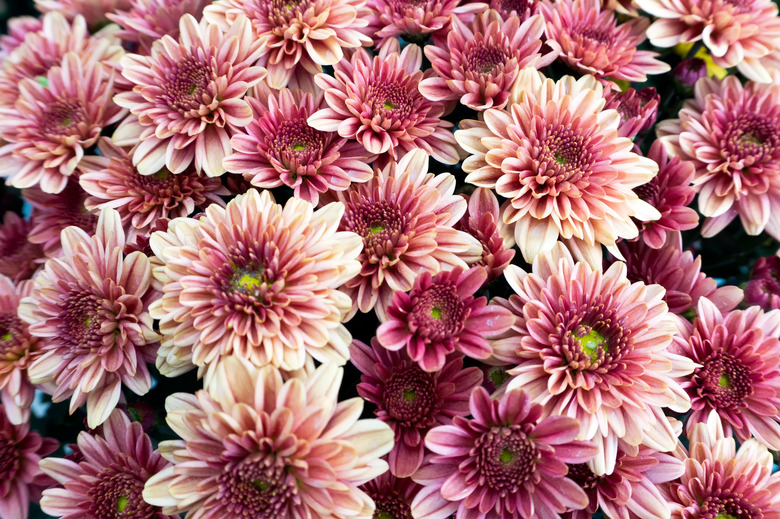How To Care For Mums
Hearty and colorful, hardy garden mums (Chrysanthemum × morifolium) top the list of flowers to add color to your outdoor fall decor, and the care for mums is simple, making them a low-maintenance option. They're hardy in U.S. Department of Agriculture plant hardiness zones 4 through 9, where they are grown as perennials. However, you'll most often find mums sold in autumn are decorative annuals. Mums make an excellent choice for anyone looking to add dimension to their garden or a pop of brightness to a porch, walkway or windowsill.
Choosing Your Mums
Choosing Your Mums
Common and abundant in a variety of locations, ubiquitous mums can usually be found at any gardening center and are typically purchased as full plants rather than started from seeds. When you purchase mums, they've most likely become root-bound to their pot, which is something to keep in mind once you've brought your plant home.
To keep your mums growing and healthy, repot them in potting soil using a container slightly larger than the one they came in so they can expand. Then, break up the roots by giving them a rub or gently pulling them away from each other so they spread out before adding them to their new pot. If your garden is within this plant's hardiness range – and if you've purchased hardy mums (not annuals) – you can plant them directly in your landscape.
Growing Conditions for Mums
Growing Conditions for Mums
The first step to care for mums is to choose an ideal location. Place them in a spot that receives full sun to meet the light requirements. Most mums require between four and six hours of bright light a day, so make sure to place them where sunlight is abundant and they won't be hidden under too much shade. On the other hand, try to keep them out of direct sun for long periods of time, which can burn or harm the flower petals. A healthy balance of either bright, indirect light or sun and partial shade should treat most mums well.
Like most flowering varieties, mums need well-draining soil to succeed, so always make sure to keep mums in yards that dry quickly after rainfall. They also grow well in potted containers with holes for drainage. If the soil doesn't drain well, the mums are susceptible to rot.
Care for Mums: Watering
Care for Mums: Watering
Another part of care for mums is regular watering. Without ample water, they may start to wilt. Don't let your mums dry out between waterings. In most cases, mums need about one inch of water per week, but keep an eye on your mums' preferences to determine the proper amount.
To water mums, simply pour water into the soil deeply until it runs all the way through to the drainage holes. If water collects in the dish, be sure to empty it after a couple of hours to prevent rotting or disease. Avoid getting the leaves wet if possible to prevent disease.
Problems to Look Out For
Problems to Look Out For
Even when you care for mums well, they can sometimes succumb to signs of distress, whether that results from over watering, under watering or simply old age. Maintain your mums by removing the dead or old parts, which is a process known as deadheading. To do this, simply look for dried or faded flowers and cut the stem back with pruning shears or scissors to about one-third of its length to encourage healthy growth. If the flowers or leaves toward the base of the stem look brown or start to droop, add more water to your mums' routine.
